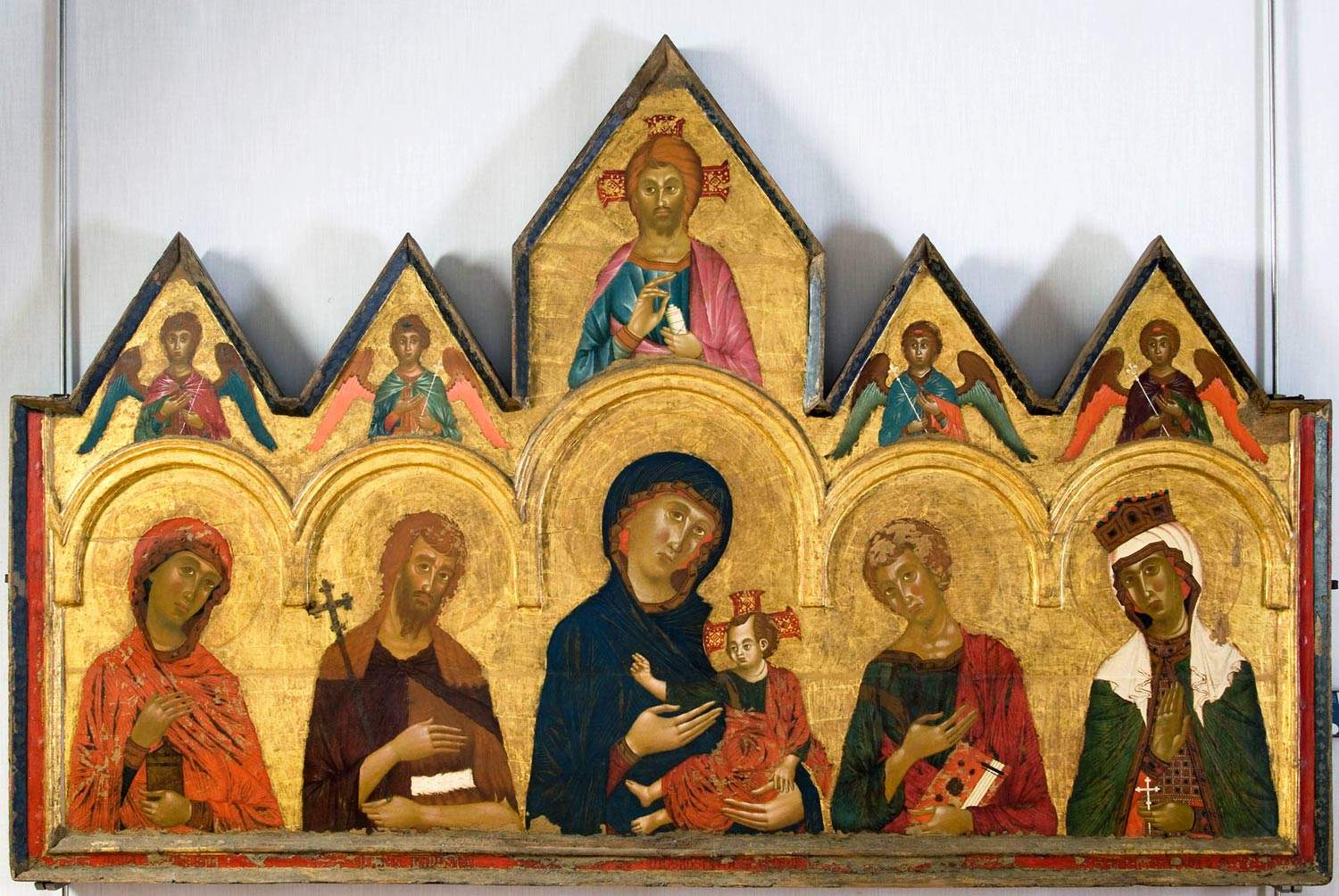National Gallery of Umbria rearranges rooms and 40 works go on a trip to Russia
Forty works from the medieval section of the National Gallery of Umbria in Perugia left the museum a few days ago and are now on display at the Hermitage in St. Petersburg, where they give life to the exhibition Arts of the Middle Ages. Masterpieces from the National Gallery of Umbria. The works will remain on their way to Russia until Aug. 22, and the nucleus that left for St. Petersburg also includes some of the museum’s great masterpieces: the Madonna and Child with Six Angels by Duccio di Buoninsegna, the dossal by Vigoroso da Siena, the Madonna and Child by Gentile da Fabriano, the Imago Pietatis by Giovanni Baronzio, the Madonna of Perugia, and the Pentecost by Taddeo di Bartolo. These are paintings, sculptures and goldsmithing from the central Italian area (Umbria, Tuscany and Marche) dated between the late 13th century and the first decades of the 15th century.
There are objects of a religious nature, from the processional cross to the dossal, from the polyptych to the tabernacle for domestic devotion, particularly representative of the spirituality of the period, which are flanked by examples of precious artifacts in use in courtly society, such as the ivory mirror box valva or the gemellion, a basin for cleaning hands found on tables, adorned with gallant scenes that evoke the refinement of that world. The exhibition also seeks to account for civic commissions for the city of Perugia, the narrative of which is rendered by sculptural elements conceived for the decoration of works of public use, such as Arnolfo di Cambio ’s fountain in pedis platee and the portal of the Palazzo dei Priori.
The Russian trip found its rationale in the work of rearranging the rooms: the Perugian public would not have been able to see the works anyway, and consequently, as part of a collaboration with the Russian museum, the Gallery planned to temporarily move the core of masterpieces to the east. Work on rearranging the rooms is scheduled to be completed by the end of this year, but in the meantime, research on works in the medieval section has already borne some important fruit. Among the new discoveries, the museum points to the attribution of two tablets to Baronzio and Francesco da Rimini, the identification of the patronymic (the ’surname’) of Vigoroso da Siena(Vigoroso Ranieri), hitherto referred to only by his first name, the recognition of santa Marta (instead of Dorotea) in Andrea di Bartolo’s panel, and the discovery of hitherto neglected inscriptions from the dossal of the Master of St. Francis.
The collaboration agreement with the Hermitage was preceded by a specific occasion (the arrival in Perugia of Leonardo’s Madonna Benois in 2019 on the occasion of Leonardo’s five-hundredth anniversary celebrations), had been announced on these pages by the director of the National Gallery of Umbria, Marco Pierini, and was then signed during 2020. The pact also involves the Region of Umbria, the Municipality of Perugia and the Fondazione Cassa di Risparmio di Perugia, with the collaboration of Hermitage Italy and the support of Villaggio Globale International. The purpose of the agreement is to produce a project for the promotion and enhancement in the international arena of Umbrian culture and the territory that generated it.
The Perugian museum has already let it be known that the Hermitage will reciprocate in 2022 with an exhibition of Italian works on loan from the Russian museum’s collection of medieval and Renaissance art. The current initiative is realized with the support of the Italian Cultural Institute in St. Petersburg and under the patronage of the Italian Embassy in Moscow and the Consulate General of Italy in St. Petersburg, in association with Antognolla Resort & Residences.
Pictured: the dossal of Vigoroso Ranieri (1291)
 |
| National Gallery of Umbria rearranges rooms and 40 works go on a trip to Russia |
Warning: the translation into English of the original Italian article was created using automatic tools. We undertake to review all articles, but we do not guarantee the total absence of inaccuracies in the translation due to the program. You can find the original by clicking on the ITA button. If you find any mistake,please contact us.



























